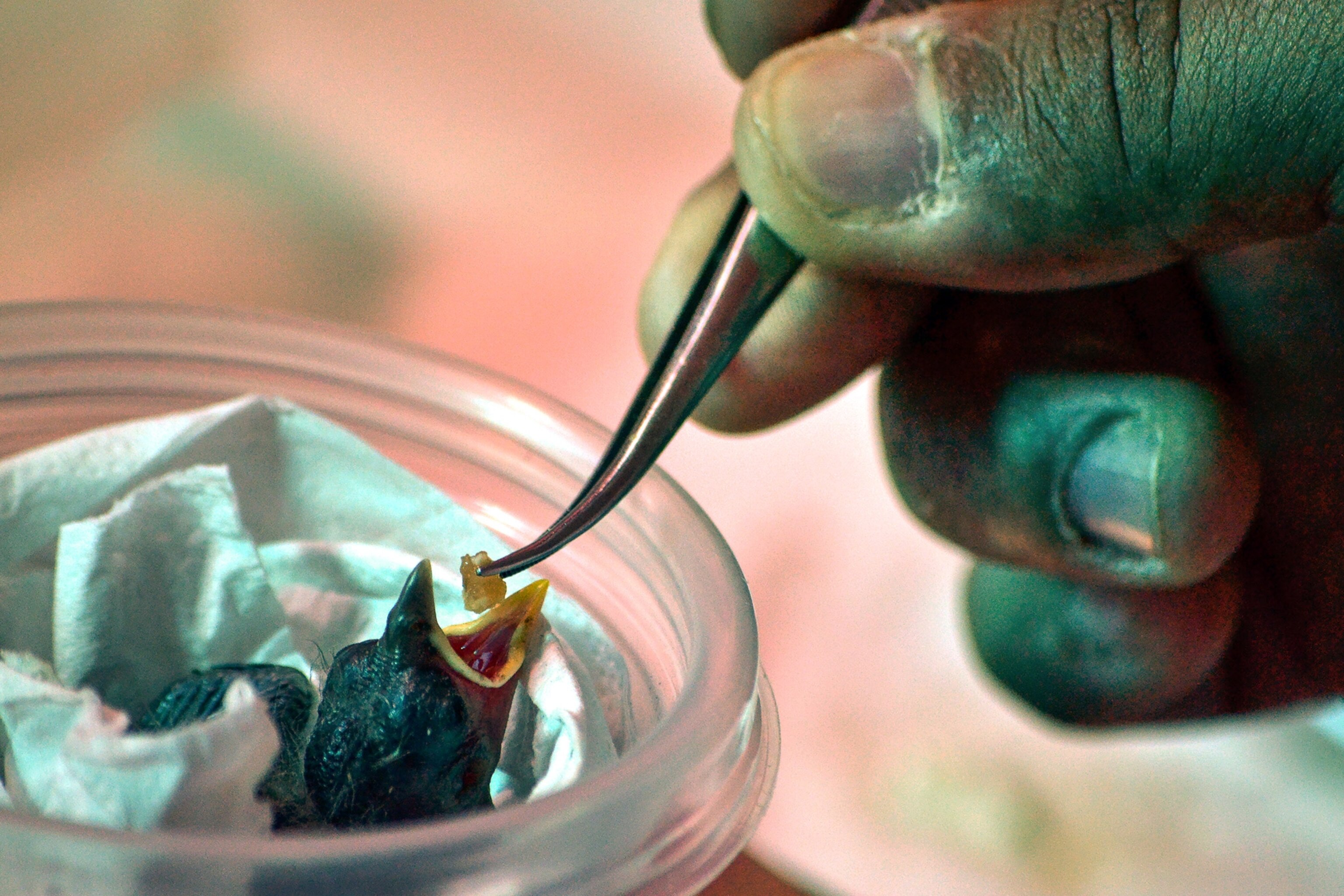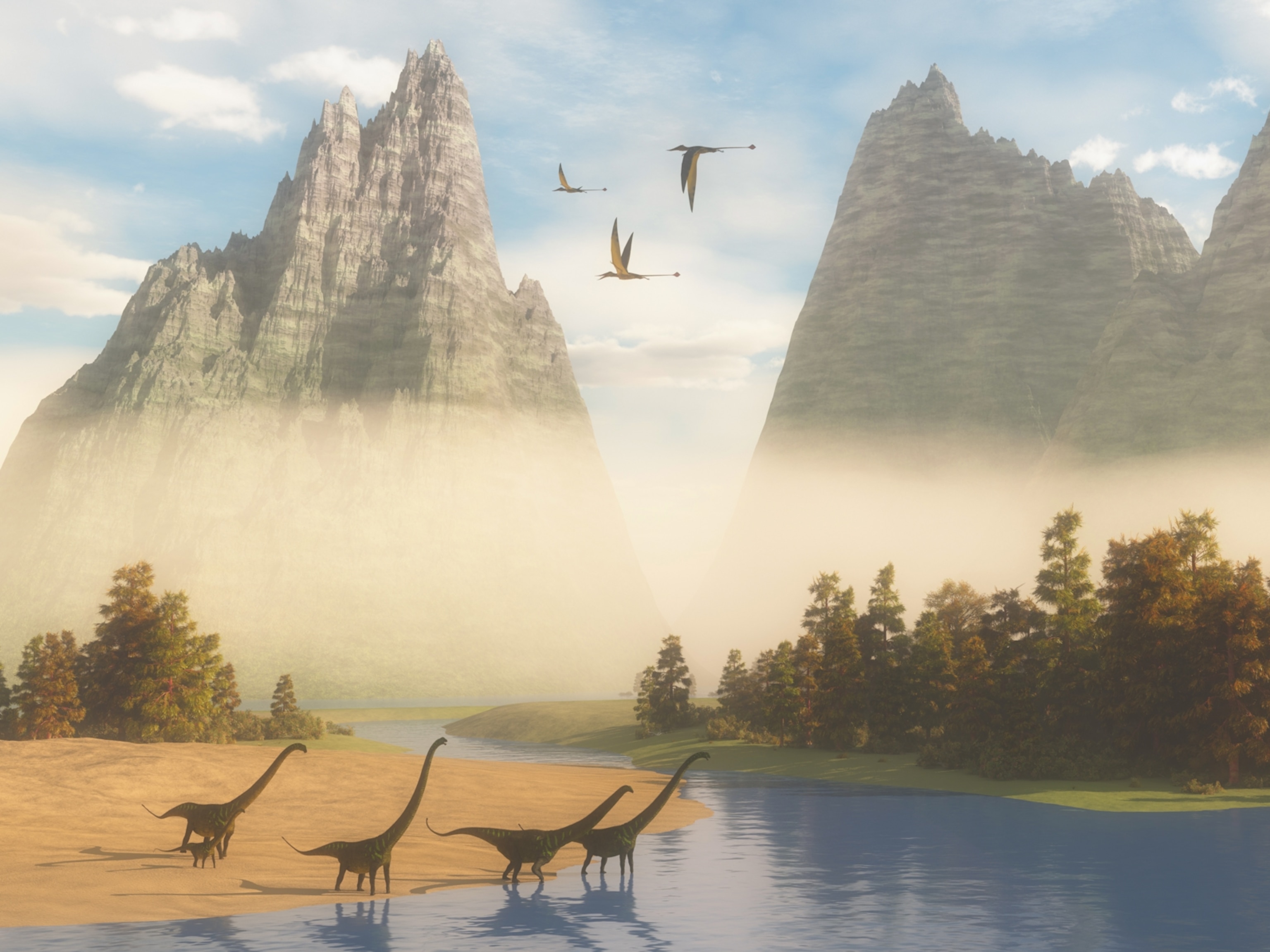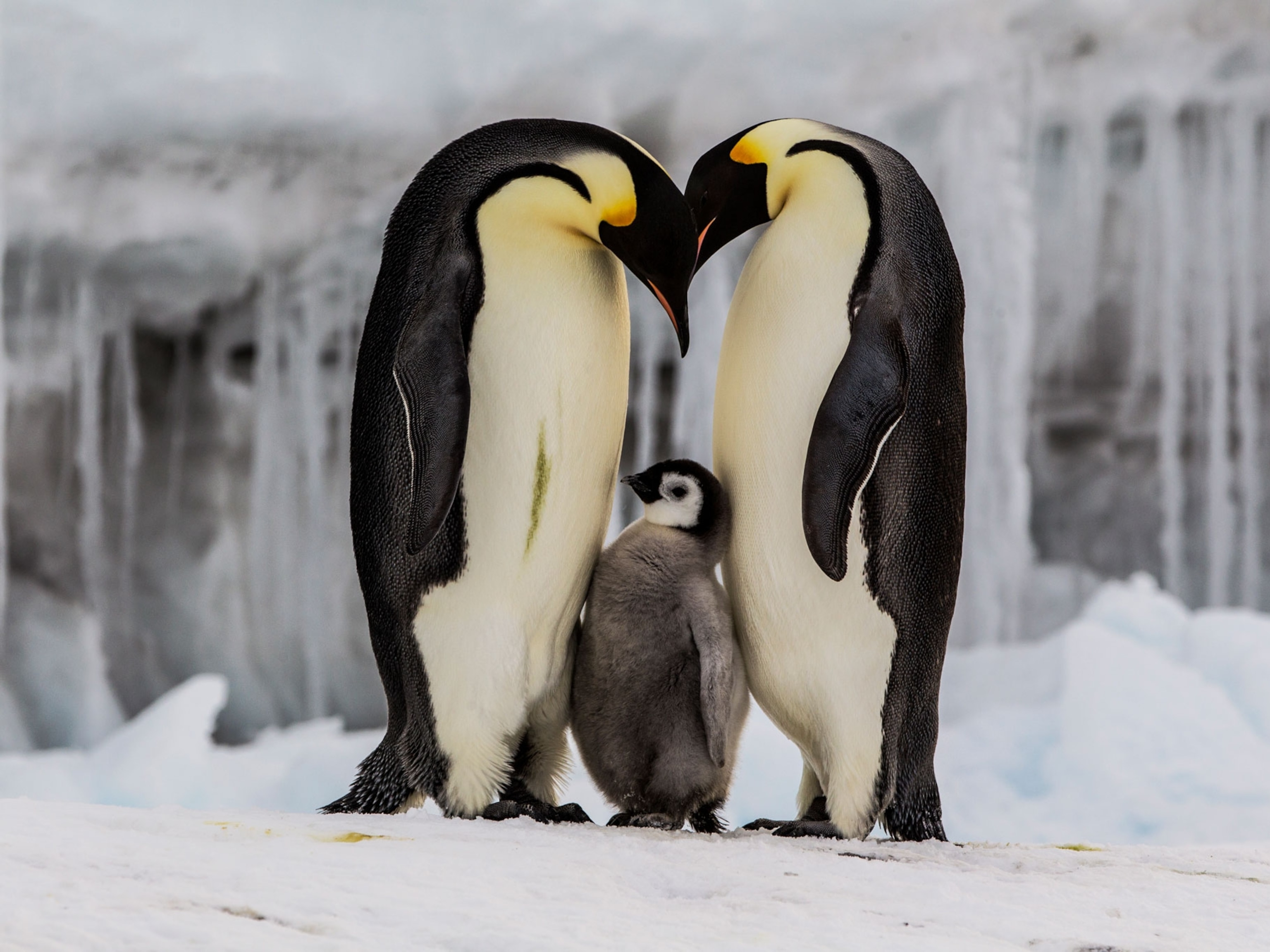
A Darwin Finch, Crucial to Idea of Evolution, Fights for Survival
One of the world's rarest birds, the mangrove finch has dwindled to a habitat the size of just 12 city blocks. Here's how scientists are trying to bring it back from near-extinction.
Francesca Cunninghame prepared for a sea voyage on a recent afternoon with some strange cargo: eight fledglings of the mangrove finch, one of the rarest birds on Earth.
Birds in hand, the scientist sailed from Santa Cruz, the most populous of the Galápagos Islands, on a boat bound for Isabela Island, 150 miles (240 kilometers) away. There, the last remaining wild population of about 80 mangrove finches (Camarhynchus heliobates) hangs on in two patches of forest no bigger than 12 Manhattan blocks.
The brownish, 6-inch (14-centimeter) bird is one of the famed "Darwin's finches," several species that were collected and brought back to England by the naturalist after his visit to the Galápagos Islands in 1835. (Related: "DNA Reveals How Darwin's Finches Evolved.")
Like many other species native to the famous Ecuadorian islands, the mangrove finch was devastated by the arrival of alien predators such as rats and cats beginning in the 1600s. It was a much smaller immigrant, though, that brought the mangrove finch to its now precarious status—a type of invasive fly that parasitizes and kills newborn birds.
To rescue the bird that helped shape the theory of evolution as we know it, the Charles Darwin Foundation, which works to preserve the diversity of the Galápagos, launched an effort to save the finch nearly a decade ago.
With the bird still in decline, in 2014 the project enlisted the help of the San Diego Zoo to begin a new phase of the program called "head-starting": taking mangrove finch eggs from the wild to raise in the safety of an incubator at the Charles Darwin Research Station on Santa Cruz.
Since last year, scientists have released 23 hand-raised birds into the wild, including the eight released during Cunninghame's most recent trip to Isabela.
"We take the birds at night, so that they'll sleep on the journey," said Cunninghame, who leads the mangrove finch rescue effort.
The first two seasons of the head-starting program have shown encouraging results. But even so, the scientists know it isn't the long-term answer to saving the mangrove finch.
"This is sort of a stopgap to hopefully prevent extinction until we can figure out how to eradicate the fly," said Nicole LaGreco, an animal-care manager at the San Diego Zoo who traveled to the Galápagos to help collect mangrove finch eggs and raise the fledglings. (Test your Darwin knowledge with our National Geographic quiz.)
"It's certainly not the answer to keep them alive forever."
A Deadly Invader
The birds Darwin collected in the Galápagos inspired him and later scientists to develop the evolutionary principle of natural selection—the idea that animals evolve particular traits to suit their lifestyles. (Read "Darwin's First Clues" in National Geographic magazine.)
For instance, as an insect eater, the mangrove finch's beak is thinner than the wide, conical beaks of other finches that eat seeds or nuts.
In the late 20th century, mangrove finches once occupied the mangrove forests for which they're named along the coasts of Isabela and Fernandina, the two westernmost islands of the Galápagos.
Sometime in the 1960s, a type of fly known by its genus name Philornis arrived in the Galápagos. Nobody is sure how it got there; because the adult fly feeds on fruit, it may have stowed away on a boatload of bananas.
Philornis lays its eggs in bird's nests; the fly's larvae hatch and feed on hatchlings' blood and tissue. Philornis has hurt many Galápagos bird species, but the mangrove finch—already suffering from predation—was especially devastated. (See "New Report Highlights Dire Situation of Many U.S. Birds.")
In the first stages of the mangrove finch program, scientists trapped many of the invasive rats and cats, eliminating most of their threat to mangrove finches.
But, under continued assault from Philornis, the species disappeared from Fernandina and most of Isabela, dwindling by 2013 to only 60 or so individuals. (Also see "Blue-Footed Booby Threatened in the Galápagos.")
"We were seeing up to 95 percent of the nestlings dying in the first month of the breeding season," Cunninghame said. "But every time the nest failed, the pair would re-nest. Some pairs would nest up to five times in one season, to rear at best maybe one or two chicks.
"And from that we got the idea that we had quite a constant supply of eggs, but they weren't getting a chance."
That led to the decision to take the eggs and raise the hatchlings in captivity, where they'd be protected from the flies.
After the babies hatch, workers use forceps to hand-feed them a high-protein diet that includes scrambled egg, papaya, wasp larvae, and moth guts.
Young birds are then transported back to Isabela, placed in a large aviary, and provided with natural food. A month later, the doors to the aviary are opened and the youngsters join their relatives in the wild.

Not Out of the Woods
Scientists are hard at work on possible control programs for Philornis, including trapping mass numbers of male flies, sterilizing them, and releasing them back into the wild to mate (unsuccessfully, of course) with females.
Killing the flies outright would be risky, since "we have to make sure that whatever method is used is safe and won't have short-term or long-term effects on the birds," notes Charlotte Causton, senior researcher at the Charles Darwin Foundation.
Another measure would involve infusing cotton balls with bird-safe insecticide and placing them in mangrove finch habitat, hoping that the birds would pick up the cotton and use it to build their nests. (See "Saving a Darwin's Finch from Extinction.")
Cunninghame also hopes to bring the bird back to where it once thrived.
"Definitely one of the project's long-term goals is to reestablish them in some of those mangroves where they historically were, on both Isabela and Fernandina."
Despite the damage done by introduced predators and parasites, the rather surprising fact is that no bird species is known to have gone extinct in the Galápagos since people arrived more than four centuries ago.
Raising mangrove finch fledglings is expensive and labor-intensive, but, for now, it's the only way that Cunninghame and her team know to keep that record intact.








